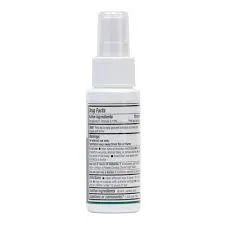cationic polyacrylamide
Cationic polyacrylamide (CPAM) is a synthetic polymer widely used in various industries due to its unique physical and chemical properties. As a member of the polyacrylamide family, CPAM is characterized by its cationic charge, which plays a crucial role in its applications, particularly in water treatment, papermaking, and soil conditioning.
One of the primary applications of cationic polyacrylamide is in wastewater treatment. In this context, CPAM acts as a flocculant, promoting the aggregation of suspended particles in water. When added to wastewater, the cationic charges of CPAM neutralize the negative charges of suspended solids, causing them to bond together and form larger particles, known as flocs. These flocs can then be easily removed from the water through sedimentation or filtration, resulting in cleaner effluent. The effectiveness of CPAM in wastewater treatment is particularly evident in municipal and industrial settings, where it significantly enhances the removal of contaminants such as oils, heavy metals, and organic substances.
In the papermaking industry, CPAM serves as a retention aid and drainage aid. Its cationic nature helps improve the retention of fine particles and fillers in the paper pulp, leading to better paper quality and reduced raw material costs. Additionally, CPAM promotes faster drainage of water from the pulp during the production process, which improves efficiency and reduces energy consumption. This dual functionality makes cationic polyacrylamide a valuable additive in the papermaking process.
cationic polyacrylamide

Another significant application of CPAM is in agriculture, particularly for soil conditioning. The addition of cationic polyacrylamide to soil can improve water retention and reduce erosion. CPAM forms a gel-like structure in the soil, which helps retain moisture and nutrients, making them more available to plants. This property is especially beneficial in arid and semi-arid regions where water scarcity is a critical concern. By enhancing soil structure and fertility, cationic polyacrylamide contributes to sustainable agricultural practices.
Despite its many advantages, the use of cationic polyacrylamide is not without challenges. Concerns about its biodegradability and potential impact on aquatic ecosystems necessitate careful management and regulation. As industries continue to look for effective solutions for water treatment and resource management, ongoing research aims to address these concerns while maximizing the benefits of CPAM.
In conclusion, cationic polyacrylamide is a versatile polymer with a broad range of applications, including wastewater treatment, papermaking, and soil conditioning. Its unique properties make it an essential tool in various industries, contributing to environmental protection and resource efficiency. With continued research and development, CPAM can play a vital role in addressing some of today's pressing environmental challenges.
-
Understanding Polycarboxylic Acids: Properties, Applications, and Future PotentialNewsJul.28,2025
-
Scale Inhibitor Explained: How to Protect Your System from Limescale and Hard Water DamageNewsJul.28,2025
-
Scale and Corrosion Inhibitors: Essential Chemicals for Industrial Water System ProtectionNewsJul.28,2025
-
Polyaspartic Acid: A Biodegradable Polymer for Sustainable ChemistryNewsJul.28,2025
-
Isothiazolinones: A Versatile Antimicrobial Class with Industrial Power and Regulatory ChallengesNewsJul.28,2025
-
A Deep Dive into 2-Phosphonobutane-1,2,4-Tricarboxylic Acid (PBTC)NewsJul.28,2025





